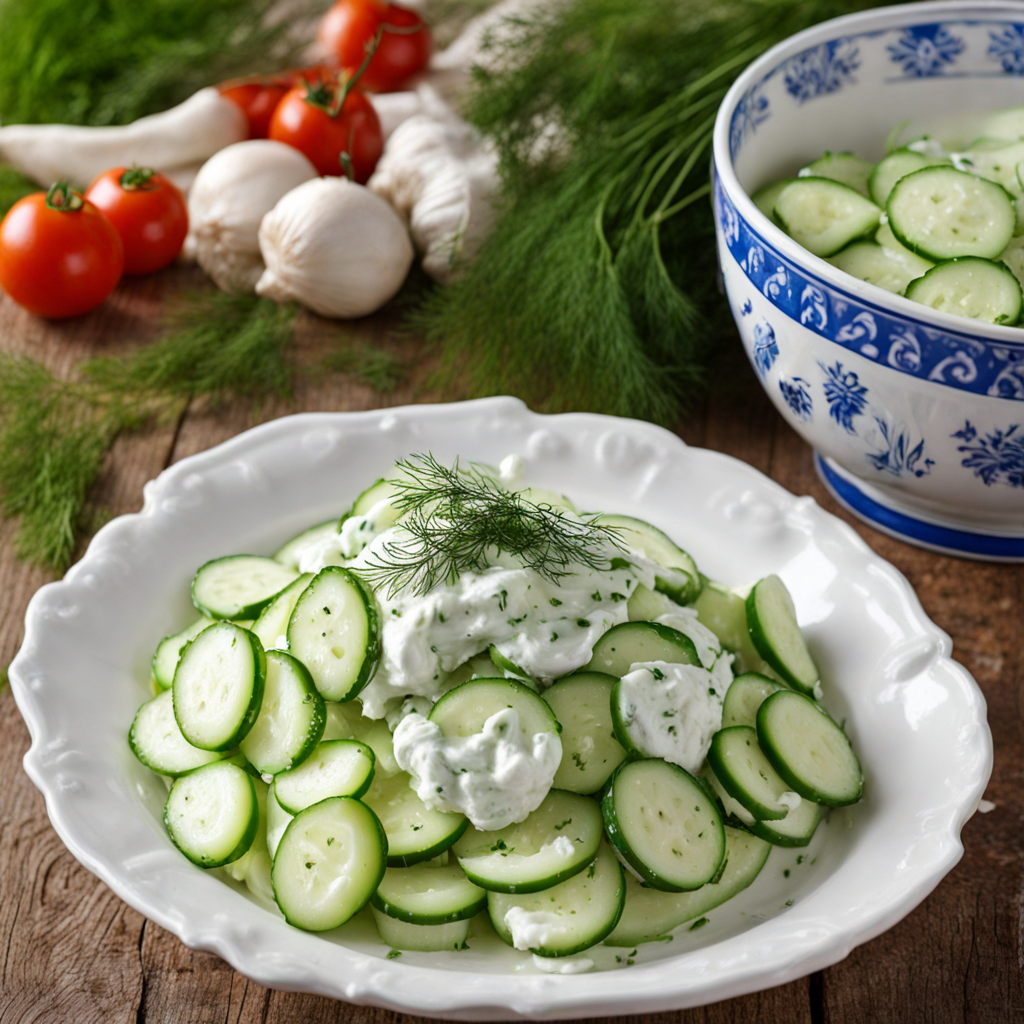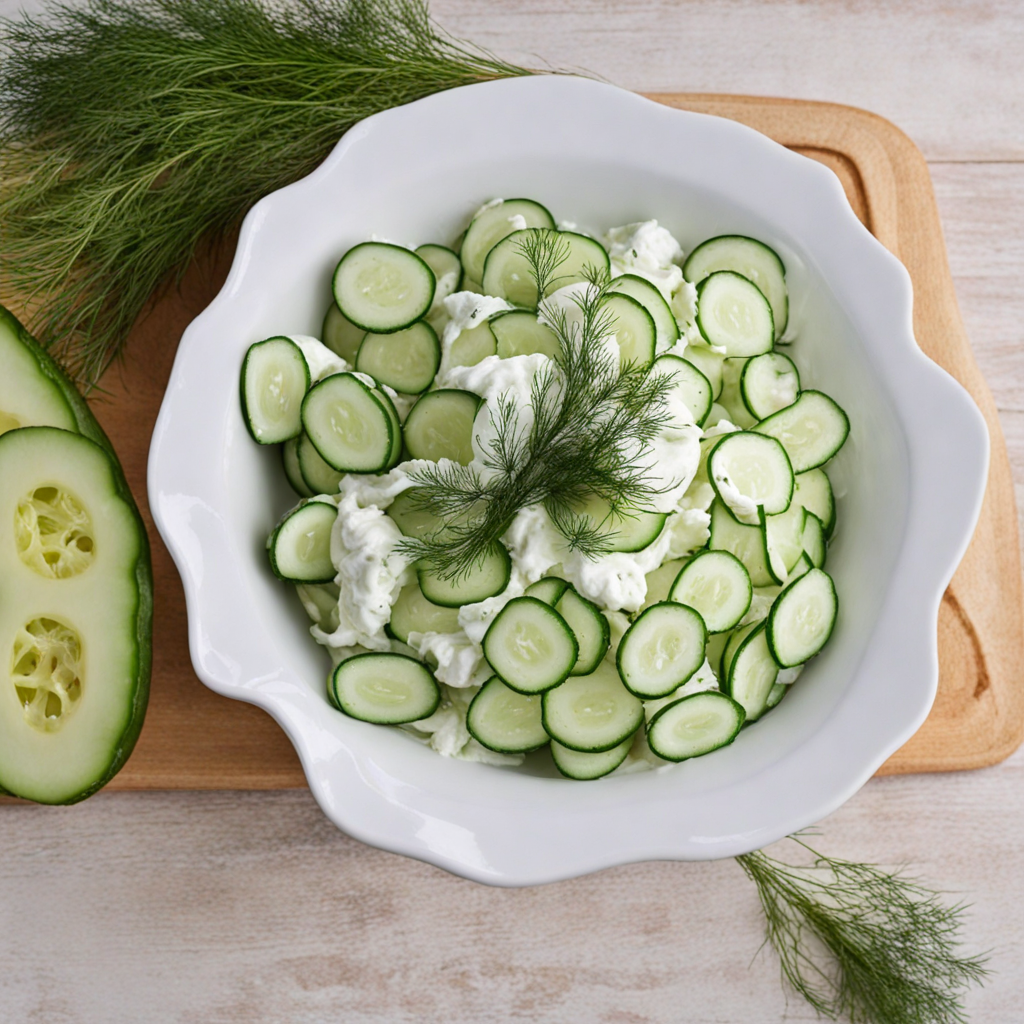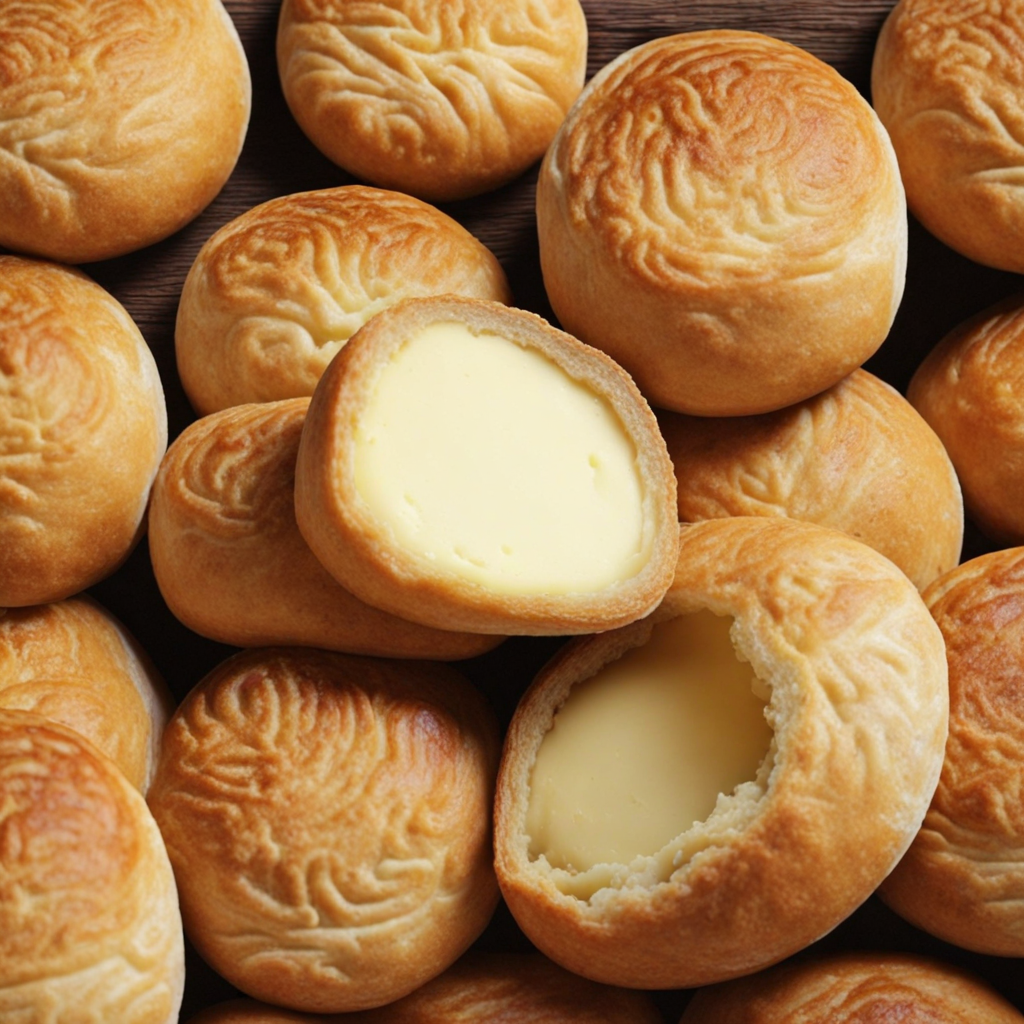Mizeria
Mizeria is a refreshing Polish salad that showcases the simplicity and vibrancy of fresh ingredients. At its core, this dish features sliced cucumbers, which are often peeled and salted to draw out their natural moisture and enhance their crunchiness. The cucumbers are typically mixed with a creamy dressing made from sour cream, which adds a rich and tangy flavor, complemented by a hint of vinegar or lemon juice for brightness. The addition of finely chopped dill not only elevates the flavor profile but also introduces a fragrant herbaceous note that is quintessentially Polish. The beauty of Mizeria lies in its versatility and adaptability. While the classic version is made with cucumbers, variations may include a mix of radishes or even fresh tomatoes, allowing for a delightful medley of textures and tastes. Some recipes might incorporate a little grated onion to add a sharp bite, while others may use yogurt instead of sour cream for a lighter twist. This dish is often served as a side salad, pairing beautifully with grilled meats, hearty potatoes, or traditional Polish dishes, making it a staple during summer months and family gatherings. Mizeria is not just a salad; it is a celebration of the fresh produce that thrives in Poland's fertile soils. Each bite offers a crisp, cool sensation that is especially satisfying during warm weather. The balance of creaminess from the dressing, the natural crunch of the cucumbers, and the aromatic dill create a harmonious blend that is both comforting and invigorating. For anyone looking to explore the flavors of Polish cuisine, Mizeria is a delightful entry point that encapsulates the essence of home-cooked Polish meals.
How It Became This Dish
Mizeria: The Refreshing Cucumber Salad of Poland Mizeria is a quintessential dish in Polish cuisine, embodying the simplicity and freshness that characterize much of the country’s traditional fare. This cold cucumber salad, typically prepared with sour cream, vinegar, and dill, has deep roots in Poland’s culinary history, and serves as a symbol of both agricultural abundance and cultural identity. Origins The origins of mizeria can be traced back to the rural communities of Poland, where cucumbers flourished in the fertile soil of the Vistula River Basin and other agricultural regions. Cucumbers have been cultivated since antiquity, with their earliest known use dating back to the ancient civilizations of Egypt and Greece. However, it was in Central and Eastern Europe that cucumbers truly became a staple, particularly as the climate and soil in regions like Poland proved ideal for their growth. The term "mizeria" itself is derived from the Polish word "mizeria," which can be translated to mean "misery" or "wretchedness." This etymology is somewhat perplexing, as the dish is anything but miserable; instead, it may reflect the humble origins of the ingredients and the dish's accessibility to the common folk. Mizeria was a frugal dish, easily made with ingredients that were often grown in family gardens or available in local markets. Cultural Significance Mizeria holds a significant place in Polish culture, often served as a side dish during family meals, celebrations, and traditional gatherings. It embodies the Polish ethos of utilizing fresh, local produce to create flavorful dishes that are both nourishing and satisfying. Mizeria is particularly popular in the summer months when cucumbers are in season, and their refreshing quality makes them an ideal accompaniment to heavier dishes, such as meats and potatoes. Moreover, mizeria reflects the broader agricultural traditions of Poland, where the culinary practices are closely tied to the seasons and the harvest. The dish is often associated with the idea of “slow food,” emphasizing the importance of savoring the flavors of fresh ingredients. In Polish households, making mizeria is a communal activity, often involving family members coming together in the kitchen to prepare the salad, share stories, and bond over the meal. In addition to its everyday significance, mizeria has also found its place in the context of Polish hospitality. It is frequently served to guests as a refreshing starter, showcasing the host's appreciation for fresh produce and traditional cooking methods. This dish has become emblematic of Polish hospitality, inviting guests to enjoy the bounty of the season in a simple yet elegant way. Development Over Time As Poland's culinary landscape has evolved, so too has the preparation and presentation of mizeria. Initially, the dish was made simply with sliced cucumbers, salt, and vinegar. The sour cream, which is now a staple ingredient, likely became popularized in the 19th century as dairy farming expanded in Poland. The introduction of sour cream added a creamy texture and tangy flavor that complemented the crispness of the cucumbers. Throughout the 20th century, mizeria became increasingly associated with Polish identity, particularly in the wake of World War II. The war had a profound impact on Polish society and culture, leading to a renewed appreciation for traditional dishes that could be made from readily available ingredients. In this context, mizeria emerged as a symbol of resilience and resourcefulness, representing the ability to create something delicious and nourishing from limited resources. As Poland entered the modern era and embraced globalization, mizeria retained its popularity but also adapted to contemporary tastes. Variations of the dish emerged, with some recipes incorporating additional ingredients such as onions, garlic, or even a touch of sugar to balance the acidity. The use of yogurt as a substitute for sour cream also became common, reflecting changing dietary preferences and health consciousness. In recent years, mizeria has enjoyed a renaissance, particularly in the context of the farm-to-table movement that emphasizes sustainability and local sourcing. Chefs and home cooks alike have begun to experiment with different types of cucumbers, herbs, and dressings to give the dish a modern twist while still honoring its traditional roots. For instance, some versions might include a sprinkle of smoked paprika for a hint of depth, or a drizzle of high-quality olive oil to enhance the flavor profile. Mizeria in Contemporary Polish Cuisine Today, mizeria is a staple at Polish tables, whether in homes or restaurants. It is often featured on menus that celebrate traditional Polish cuisine, alongside other beloved dishes such as pierogi, bigos, and gołąbki. The salad's simplicity and vibrant colors make it a visually appealing dish, often garnished with fresh dill or chives to enhance its presentation. Moreover, mizeria has transcended its humble origins to become a symbol of Polish culinary heritage, celebrated in food festivals and cultural events. It serves as a reminder of the importance of preserving traditional recipes while also allowing for culinary innovation. As Polish cuisine continues to gain recognition on the global stage, mizeria stands out as an emblem of the country's agricultural bounty and rich cultural tapestry. Conclusion In conclusion, mizeria is more than just a cucumber salad; it is a dish steeped in history and cultural significance that reflects the values of Polish society. From its humble beginnings in rural gardens to its status as a beloved staple in contemporary Polish cuisine, mizeria embodies the spirit of Polish hospitality and the importance of fresh, local ingredients. As it continues to evolve, mizeria remains a testament to the resilience of culinary traditions and the enduring connections between food, culture, and community. Whether enjoyed at a family gathering or a festive celebration, mizeria will always hold a special place in the hearts of those who cherish Polish cuisine.
You may like
Discover local flavors from Poland







